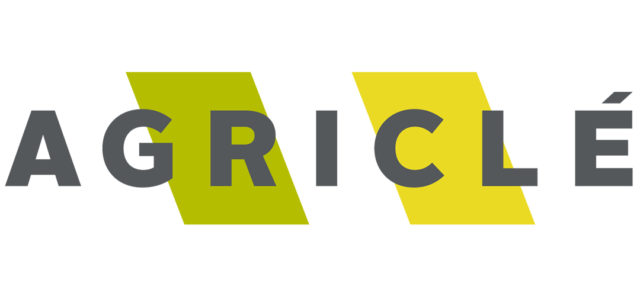“Symposium review: Defining a pathway to climate neutrality for U.S. dairy cattle production.” Journal of Dairy Science Vol. 105, No. 10, 2022. This review, from researchers from Elanco and the University of California – Davis, focuses on a problem that recently has garnered more attention from the public opinion as well as governments. The authors provide some background to the problem, saying that in the U.S. it is estimated that dairy cattle production is responsible for approximately 99 to 172 million metric tonnes of CO2 equivalents, which represents approximately 1.9% to 2.5% of annual U.S. greenhouse gas (GHG) emissions.
Dairy cattle production, defined as all activities from upstream inputs into feed production and animal management, contributes to the atmospheric increase of GHG emissions and the warming impacts associated with those increased GHG concentrations. These emissions include feed production nitrous oxide (N2O) emissions from soils, enteric methane (CH4), methane and nitrous oxide emissions from manure, and carbon dioxide (CO2) emissions from the combustion of fossil fuels used in farming equipment. Following a trend of increasing GHG emission commitments for businesses across sectors of the economy, the U.S. dairy industry has committed to a goal of net zero GHG emissions by 2050.
To evaluate the emissions of methane from digestive fermentation, from manure management as well as manure-origin nitrous oxide, the authors used a model called the Cattle Enteric Fermentation Model. In brief, the process involves characterizing populations of cattle by type (e.g., mature cows versus replacement heifers), characterizing representative diets by cattle type to calculate emissions factors and estimating enteric methane emissions by cattle type across the U.S. The model also accounts for the animal’s dry matter intake (DMI), the digestibility of feeds and the methane yield per unit of gross energy the animal consumes.
As U.S. dairy cattle have increased their productivity since 1990, they have increased feed consumption. Feed consumption is a key driver of methane emissions; thus enteric methane emissions per cow in the U.S. have increased. However, enteric methane emissions per unit of milk have declined as increases in methane emissions per cow have been offset by increased milk production (from 1990 to 2019, the number of dairy cows in the U.S. decreased 6%, but milk production per cow increased 56%).
At the same time, methane emissions from manure management systems have increased per unit of milk. This has been driven by a shift in production systems of dairy farms with smaller herd sizes where manure is managed as a solid (e.g., daily spreading of manure) to dairy farms with larger herd sizes where manure is managed in liquid systems (e.g., anaerobic lagoons). As methane production requires an oxygen-free environment, the switch to more long-term storage, liquid manure management systems has increased the methane gas yield from dairy cattle manure in the U.S.
The authors present a case study scenario, with several conditions (namely that the dairy cattle herd will remain stable from January 2021 through 2050). In the outlined scenario, emissions need to decline per mass unit of milk produced, but also on an absolute basis, meaning the total emissions from the dairy industry must decline. The authors say this implies substantial departures from business as usual and will require development and adoption of new innovations. They assume in the model reductions of enteric methane of 23%, which they say are consistent with reductions associated to the use of specific feed additives (i.e., 3-nitrooxypropanol). Additionally, there is the potential for adopting genetic selection strategies that lower methane emissions from cattle or reduce emissions by indirectly selecting for feed efficiency traits, such as residual feed intake. Other aspects include new manure management techniques and policies that drive change. The authors give the example of California, where the dairy industry has already achieved a 22% reduction in emissions using covered lagoons and conversion of captured biogas into vehicle fuels, among other techniques.
The authors conclude that as society addresses climate change, it will be critical for all sectors of the U.S. economy to do their part in stabilizing or reducing warming effects. The U.S. dairy cattle industry is no different.
“Symposium review: Environmental effects on mammary immunity and health.” Journal of Dairy Science Vol. 105 No. 10, 2022. This review, from researchers from the universities of Florida and Missouri, addresses environmental effects, like seasonal shifts in temperature (heat stress) and light (photoperiod), on the growth and survival of pathogens in the environment, as well as on the cow’s response to a pathogen, with specific reference to mammary gland immunity. The authors explain that even in intensively managed animal production systems such as modern dairy operations, several seasonal effects on cow health and productivity can be observed. Diseases such as mastitis result from a complex interplay among the components of the host-pathogen-environment triad. Numerous studies have described the fluctuations that occur seasonally in broad indicators of mammary health such as bulk tank somatic cell count (SCC). These studies generally detail an inverse relationship between milk yield and SCC with the increase in SCC following summer peaks in ambient temperature.
Studies done in vitro have shown that the ability of components of the immune system to function properly are severely affected by heat stress. The effect of heat stress on the immune system seems to be related not only directly with the reduction of function of multiple indicators of the immune system, like for example a reduction on the phagocytic capacity (ability to ingest and destroy microbes) and on the superoxide production (an indicator of the killing ability of the neutrophils, a type of white blood cells), but also with an actual loss of immune cells (apoptosis, or death of cells).
If heat stress alters the immune function, one expected outcome, according to the authors, would be an increase in disease incidence in cows that experience a dry period under hot ambient conditions. Studies were done to test this hypothesis by comparing disease incidence in a large herd on a commercial dairy in Florida between cows that were dry in the summer versus those that were dry in winter, when all cows were housed on pasture during the dry period. Cows dry during the summer (June, July, August) had higher incidences of mastitis, respiratory illness and retained fetal membranes relative to genetically similar herdmates managed under the same conditions in winter (December, January, February).
The authors refer studies with dry cows where carry-over effects of dry period heat stress on innate immune system function have been observed in the following lactation. They monitored neutrophil phagocytosis and oxidative burst activity during the dry period under heat stress and cooling, and subsequently during lactation in the same cows when all were cooled. There was no difference in neutrophil function between groups in the dry period, but in lactation both phagocytosis and oxidative burst were improved in the animals that had been previously cooled when dry compared with those that were under heat stress. These observations are consistent with the effect of heat stress on immune function translating to depressed disease responses, even after the heat stress insult has been removed.
Although the previous discussion is about heat stress, the authors also indicate photoperiod as a potential effector of environmental effects on mammary health. They say there is strong evidence, particularly in late-gestation cows, that manipulation of light exposure alters immune response. They explain that manipulation of the duration of photoperiod influences the levels of circulating prolactin, with increases in prolactin under long days (prolactin is a hormone necessary for the initiation and maintenance of milk production) but, at the same time, a reduction in prolactin receptors expression on leukocytes (white blood cells), with cows with shorter photoperiod days showing greater prolactin receptors during the dry period. This is important because it confirms the hypothesis that photoperiod mediates the effects on immune function via shifts in prolactin sensitivity.
In summary, seasonal shifts in temperature and light affect the growth and survival of pathogens in the environment, and likely lead to greater pathogen exposure. However, increased pathogen load is not the only reason for seasonal differences in disease. Both the acquired and innate arms of the immune system are negatively affected by heat stress, particularly during late gestation and early lactation.
This column brings you information regarding some of the research being done around the world and published in the Journal of Dairy Science. The objective is to bring to light areas of research that may have an immediate practical application on a dairy farm, as well as research that, even though may not have a practical impact now, could be interesting for its future potential application. The idea is to give a brief overview of select research studies, but not go into detail on each topic. Those interested in further in-depth reading can use the citations to find each study.









